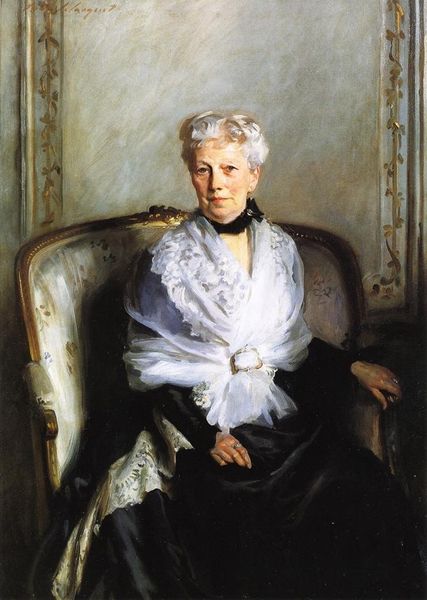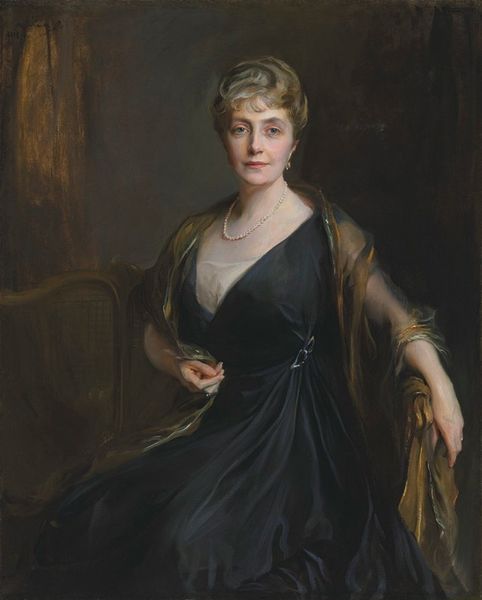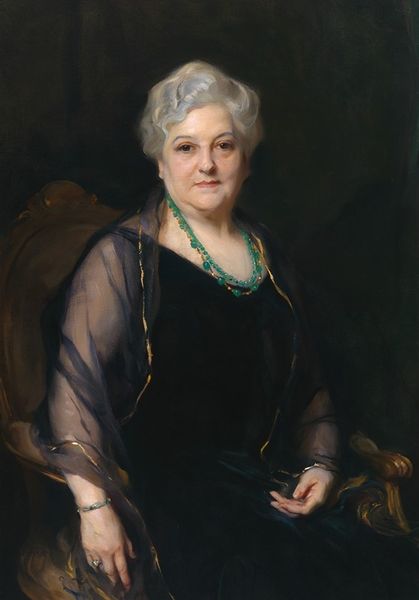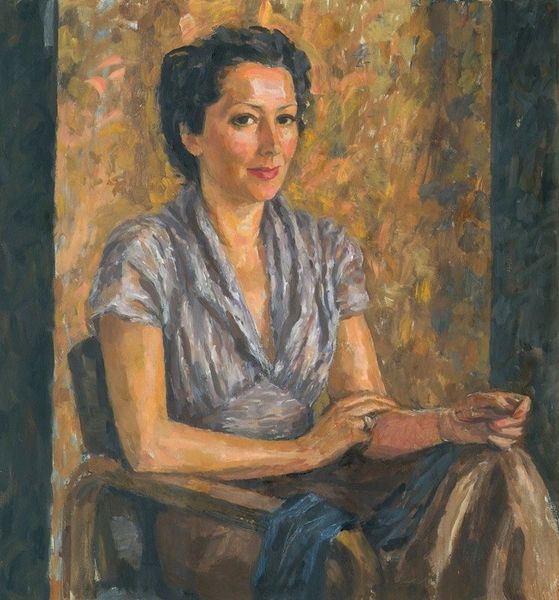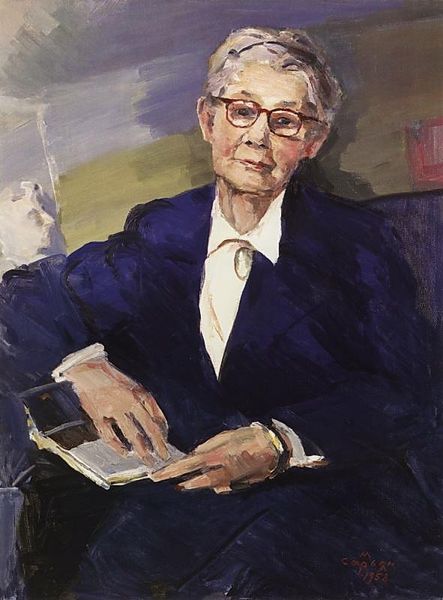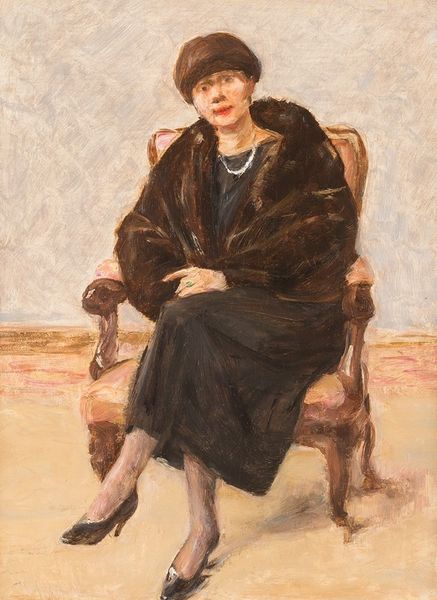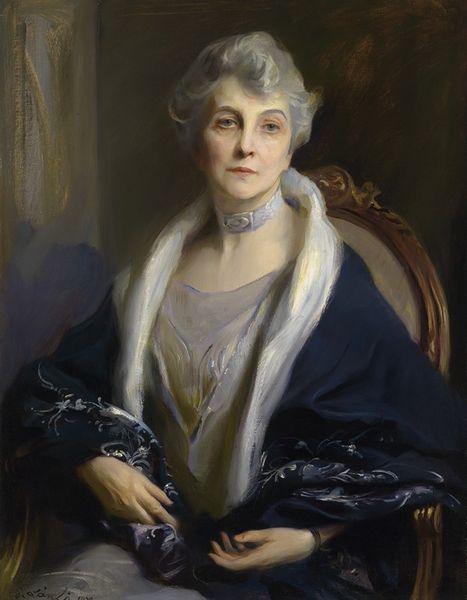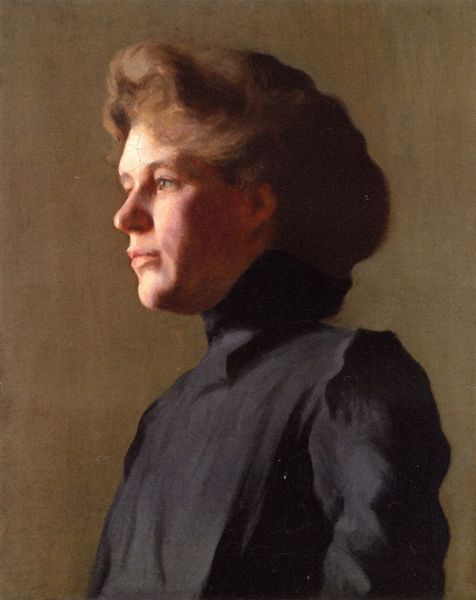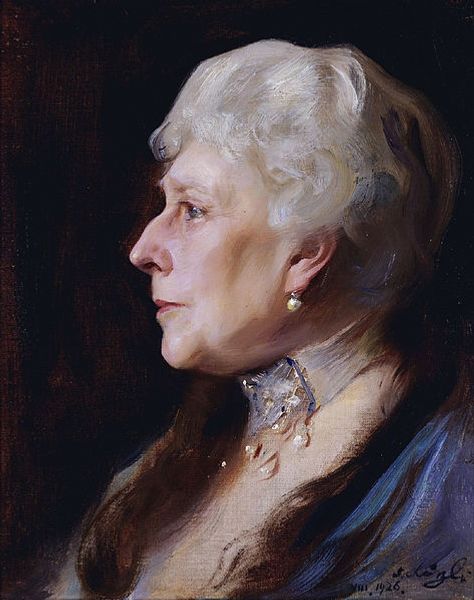
painting, oil-paint
#
portrait
#
figurative
#
painting
#
oil-paint
#
academic-art
#
realism
Copyright: Modern Artists: Artvee
Curator: This is Daniel Greene’s portrait of “Mrs. Chester Carlson, Xerox Corporation.” It’s an oil painting and falls into a tradition of academic portraiture. The way it captures a moment of human presence with what appears to be effortless artistry. Editor: My immediate impression is one of poised reserve. There’s a stillness to her posture, but her eyes engage. She has such kind eyes. There’s an almost melancholic air that draws you in. It is quite an affecting study in character, but tell me more of the Carlson family. Curator: Well, Chester Carlson, was, of course, the inventor of xerography, a groundbreaking contribution to office technology in the 20th century. And this portrait, I imagine, immortalizes his wife. While the work's date is unknown, this was likely a corporate commission. Editor: How does it reflect, or perhaps attempt to shape, the public image of a woman associated with such a significant corporate entity? Her pose doesn't flaunt any markers of great wealth, which I suppose is important. There's instead the choice of a darker hue for her attire; rather more elegant than ostentatious. Curator: True. While the painting gestures to luxury in the gold accents of her shawl and bracelets, the restrained palette suggests a cultivated sensibility, reinforcing the image of a person of stature but one who avoids obvious display. We can almost see this as an endorsement of the brand: solid, trustworthy, successful without being vulgar. Editor: Looking more closely at the eyes, one finds such exquisite brushwork—those almost translucent layers convey vulnerability and resolve so well! One begins to wonder if that air of melancholy that I mentioned earlier, serves as a window into the emotional landscape of someone connected to that degree of innovation and influence, which can bring its own stresses and sacrifices. Curator: An astute point, her interlaced fingers speak subtly to this consideration; her body language could perhaps be read to indicate not just confidence but something that hints at interiority or a sense of deliberation, or perhaps caution. It avoids cliché while managing to communicate prestige, and a carefully constructed identity, making it an insightful commentary on women in business. Editor: Ultimately, seeing this now, knowing how it functioned as a formal and institutional portrait, I’m now much more aware of how complex that is as a category. A striking study. Curator: I agree. What appears at first glance as a standard portrayal is really a nuanced meditation on representation, perception, and the societal roles within burgeoning corporate modernity.
Comments
No comments
Be the first to comment and join the conversation on the ultimate creative platform.
